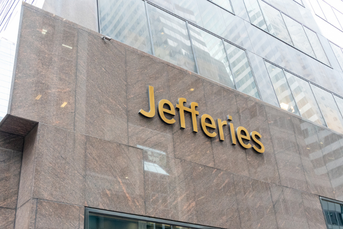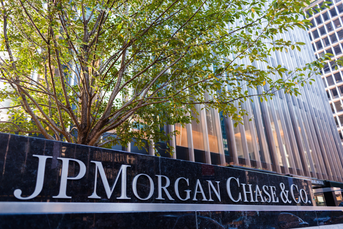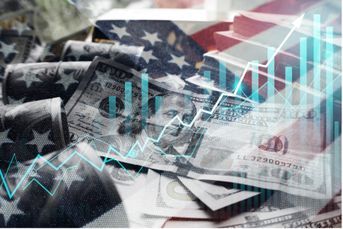Bernanke lays a beat down on bond vigilantes

Low-inflation has investors flocking to U.S. Treasurys, despite sky-high deficits: U.S. the 'least dirty shirt' says Pimco's Gross
Federal Reserve Chairman Ben S. Bernanke has tamed the bond vigilantes.
While investors punish European nations from Greece to Spain for deficits by pushing up bond yields, Treasury rates of all maturities have fallen to an average of about 2 percent from 2.75 percent a year ago even as the amount of marketable debt outstanding increased 20 percent to $7.96 trillion.
The market’s advocates of fiscal discipline are being placated as Bernanke keeps benchmark interest rates at a record low, allowing them to profit from the gap between short- and long-term yields with inflation at a four-decade low. Bill Gross, the manager of the world’s biggest bond fund, said as recently as March that “bonds have seen their best days.” But on June 4, he called Treasuries “attractive.”
“Central banks by keeping rates near zero have basically covered the bond vigilantes in duct tape,” said Edward Yardeni, who coined the term in 1983 for investors who protest inflationary monetary or fiscal policies by selling bonds and driving up government borrowing costs.
“They have stymied them from expressing their displeasure over runaway government deficits and social welfare spending,” Yardeni said. “We are not getting any votes of protest from the bond vigilantes in the U.S. because short-term rates are so low.”
Rising Returns
After losing 3.72 percent in 2009, U.S. debt, the most liquid fixed-income securities in the world, has returned 4.49 percent since December, the best start to a year since gaining 5.81 percent during the same period in 2003, according to Bank of America Merrill Lynch’s Master Treasury Index. Ten-year Treasuries yielded 3.28 percent today, down from this year’s high of 4 percent on April 5.
Bonds are preserving value as investors such as billionaire George Soros predict the financial crisis is “far from over” with nations in Europe struggling to contain spending and stock markets from the U.S. to Germany and Japan posting declines. Greece’s 10-year notes yield 4.94 percentage points more than U.S. Treasuries, compared with a median spread of 0.68 percentage points over the past five years.
While yields are low on an absolute basis, they’re relatively high by other measures. The yield on 10-year notes is 2.51 percentage points higher than two-year notes, more than double the average of about 1 percent since the 1980. After taking into account consumer prices, excluding food and energy, the yield equals 2.33 percent, up from last year’s low 0.71 percent in January.
‘Fast Asleep’
“The famed bond vigilantes are fast asleep,” Joachim Fels, co-head of global economics at Morgan Stanley in London, said in a June 2 report. “But this is not new: bond markets also took years to take onboard the ‘Great Inflation’ of the 1970s and the big disinflation of the 1980s and 1990s.”
Economists and strategists are cutting their yield forecasts, predicting 10-year Treasury rates will end the year at 3.8 percent, based on the median of 60 estimates in a Bloomberg News survey from June 2 to June 8. That’s down from 4.1 percent in May’s survey and 4.25 percent in April.
Even if the yield matches the highest forecast, 5.25 percent, it would still be below the average of 7.18 percent since 1980, reflecting growing confidence since Paul Volcker led the central bank in the 1980s.
The consumer price index fell 0.1 percent in April, the first drop since March 2009, figures from the Labor Department in Washington showed May 19. Excluding food and fuel, prices were unchanged, for the smallest 12-month gain in four decades.
Real Yields
Slower inflation preserves the value of fixed-interest payments, especially for longer-maturity bonds. Thirty-year debt has returned 8.72 percent this year, compared with a decline of 2.11 percent for the Standard & Poor’s 500 Index.
Real yields averaged 2.30 percent over the past decade, compared with 3.45 percent in the 1990s and 4.42 percent in the 1980s, according to data compiled by Bloomberg.
“The U.S. is the sovereign debt of choice right now,” said John Spinello, chief technical strategist in New York at Jefferies Group Inc., one of 18 primary dealers that trade with the Fed. “The fact that we have low inflation is keeping a lid on any rise in rates.”
Lower Treasury yields may also reflect investor demand for a haven amid concern Europe’s debt crisis will slow the global economy. Gross, who manages the $228 billion Total Return Fund, called the U.S. the “least dirty shirt” in a “world full of dirty shirts in terms of excessive debt.”
‘Significant Haven’
“A 30-year Treasury bond at just mildly above 4 percent is not a great value, but it’s a significant haven of storage, so to speak, for investors,” Gross, the co-chief investment officer at Newport Beach, California-based Pacific Investment Management Co., said in a radio interview June 4 on Bloomberg Surveillance with Tom Keene. “It’s attractive from the standpoint that inflation, in a new-normal economy, stays in the 1 to 2 percent area.”
Gross boosted his fund’s investment in U.S. government- related debt in April to the highest level in five months. A month earlier he said in a separate Bloomberg Radio interview that “bonds have seen their best days.”
U.S. debt is forecast to about 90 percent of the economy in 2020 from 53 percent currently, according to the non-partisan Congressional Budget Office. The White House budget office projects a $1.55 trillion deficit in the year ending Sept. 30, up almost 10 percent from last year’s record.
‘Act II’
Soros said that the world economy bears similarities to the 1930s, another time when governments were under pressure to narrow their budget deficits amid weak economies.
“We have just entered Act II” of the crisis, Soros said at a conference in Vienna on June 10.
History shows yields can remain low as deficits rise. When the U.S. was in the midst of the Great Depression, 10-year yields fell to 3.12 percent in 1934 from 3.34 percent in 1931, according to “A History of Interest Rates” by Sidney Homer.
Then, America’s budget deficit as a percentage of gross domestic product rose to 5.9 percent from 0.6 percent as the government boosted spending to revive the economy, Office of Management and Budget data shows. Last year, the deficit was 9.9 percent of GDP, up from 3.2 percent in 2008. The OMB estimates the ratio will rise to 10.6 percent this year before falling to 8.3 percent in 2011.
Inflation Outlook
Even though government spending is forecast to remain elevated, bond investors don’t foresee faster inflation. The difference between yields on 10-year notes and Treasury Inflation-Protected Securities, a gauge of trader expectations for consumer prices, stood at 1.99 percentage points today, down from this year’s high of 2.47 percent in January.
Investors are piling into U.S. government debt, supporting President Barack Obama’s recovery efforts, because they can profit from buying longer-term government debt funded by short- term loans at lower rates in carry trades. The Fed has kept its benchmark rate for overnight loans locked in a range of zero to 0.25 percent since December 2008.
“The factor that really matters is how the financial markets deal with the financing,” said Bruce Kasman, chief economist at JPMorgan Chase & Co. in New York in a Bloomberg Radio interview on June 8. “And right now, we are dealing with falling interest rates and not rising interest rates. From a near-term point of view, the drag from debt is not one that worries me from the point of view of growth.”
Bank Demand
The difference in short- and long-term rates has helped banks shore up profits after taking $1.77 trillion in writedowns and losses since the start of 2007, according to Bloomberg data.
Commercial banks’ holdings of Treasuries and agency debt reached $1.51 trillion in April, an almost 37 percent increase from January 2008, and the highest level since at 1973, Fed data show. Holdings were $1.481 trillion in the week ended June 2.
“Banks are doing this carry trade because there is no price for credit as interest rates are being kept so low,” said Joseph Mason, a professor of finance at Louisiana State University in Baton Rouge.
Investors who borrowed dollars at the three-month London interbank offered rate and invested in 10-year notes over the last year would have on average earned about 3.21 percent, according to data compiled by Bloomberg. The annualized rise in core consumer prices was 1 percent in April.
‘Gated Community’
Central banks are raising concern about the risk to investors in the carry trade when rates begin to rise.
The increase in such trades “has contributed to raising the risk of their abrupt unwinding which, if it were to occur, would most likely raise the risk of higher interest-rate volatility” in the U.S. and euro zone, the European Central Bank said in its biannual Financial Stability Report May 31.
Treasuries lost 3 percent in 1994 as former Fed Chairman Alan Greenspan began six rate increases that were earlier and larger than investors anticipated. Global capital losses that year were about $1.5 trillion, according to estimates by the Bank for International Settlements in Basel, Switzerland.
Bernanke and Fed policy makers have given little indication they will back away from the pledge to keep rates at a record low for an “extended period,” given the unemployment rate is above 9 percent, the inflation rate is trending down and the Europe remains in turmoil.
“The reality is that most bond vigilantes live in a gated community — called the yield curve,” Yardeni said. “It’s either bonds or money-market instruments. So, you have to swallow your pride and all your anxieties about out of control fiscal policy and buy the bonds anyway because the alternative is zero percent.”
Learn more about reprints and licensing for this article.








